Reach & Match | Braille Learning Toy for Toddlers and Children
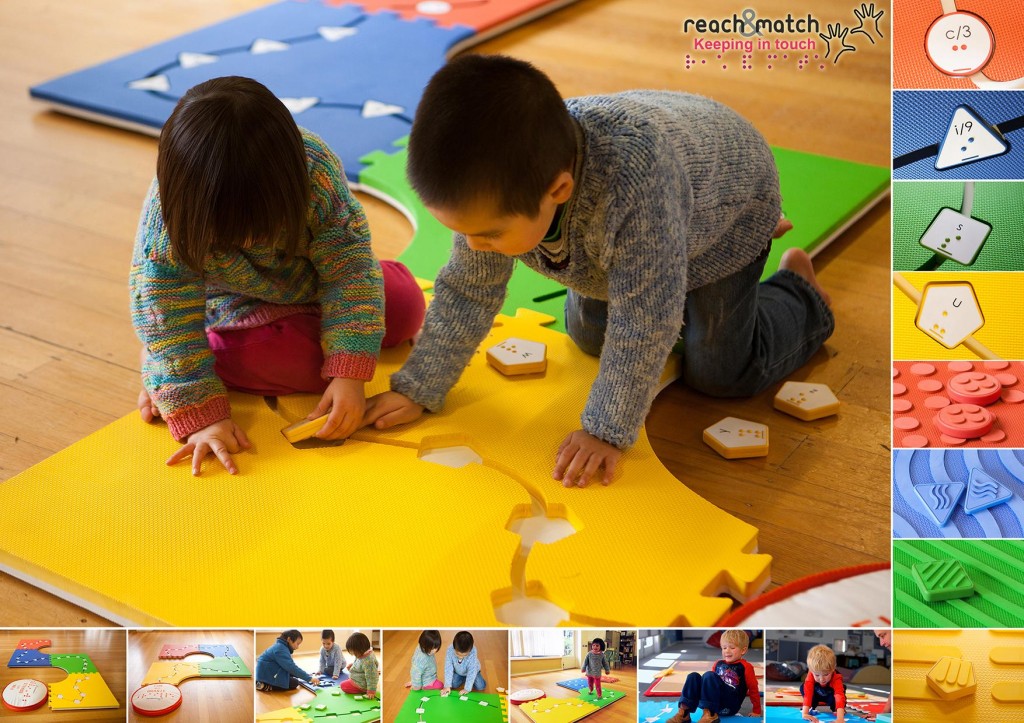
Worldwide there is a problem where children who are blind or visually impaired tend to fall behind their peers in learning. Sometimes this is due to mental disabilities related to their blindness. But other reasons include a lack of teachers, programs, tools, and societies that tend to put these children on the back burner. Another worldwide trend is the reduced learning and use of Braille among children who are blind. Sure technology is making Braille less needed, but knowing the language is still a useful tool and can aid in education. With these and more issues in mind, Australian Industrial Design student Lau Shuk Man (Mandy) developed and made the Reach & Match. A Braille learning toy for toddlers and children that also aids in stimulating other senses and cognition.
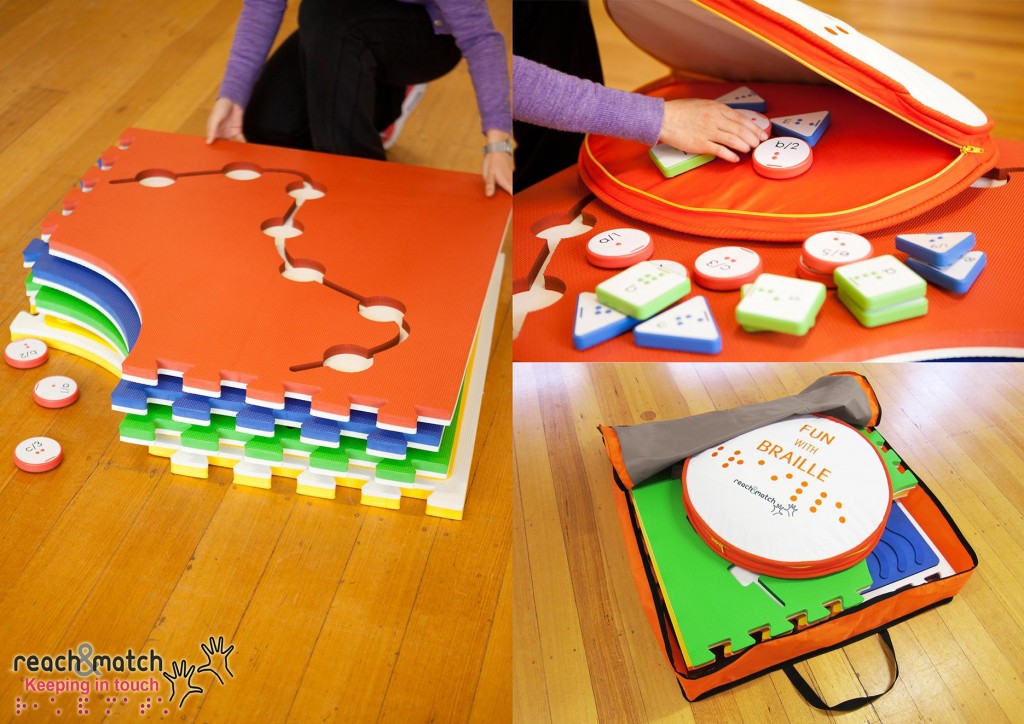
Development
Mandy developed her concept after doing extensive research and working with children who were both blind and visually impaired. Going through many prototypes she eventually had a finished product. Reach & Match is a floor mat game with four interconnecting mats, a circular cushion, and many “block” pieces in different shapes and colors.
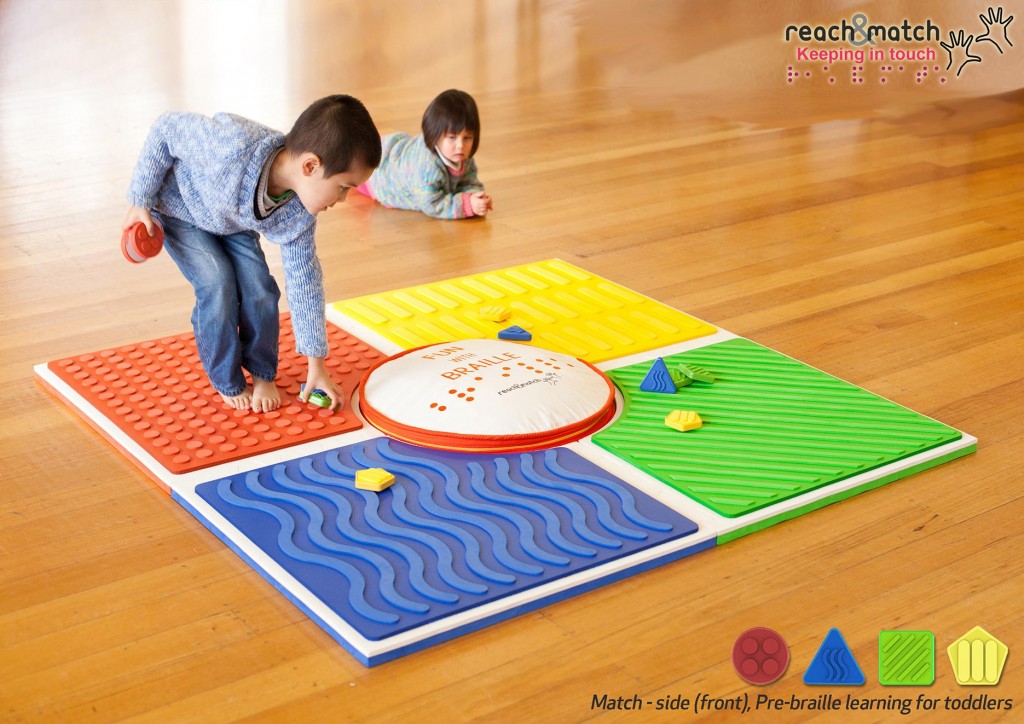
Building Basics
When little ones are toddlers, their brains are taking in tons of information from all of their senses. Stimulating these senses helps to develop their brains and make them stronger. This is where Reach & Match begins. The four mats are put together in a square with the circular cushion in the center. Each mat has it’s own primary color and unique textured surface. The blocks have a color and texture that correspond to each of the mats. The toddler’s goal is to then match the blocks with their matching mat using vision and/or touch. For added stimulation, the blocks make different sounds to help with audio identification.
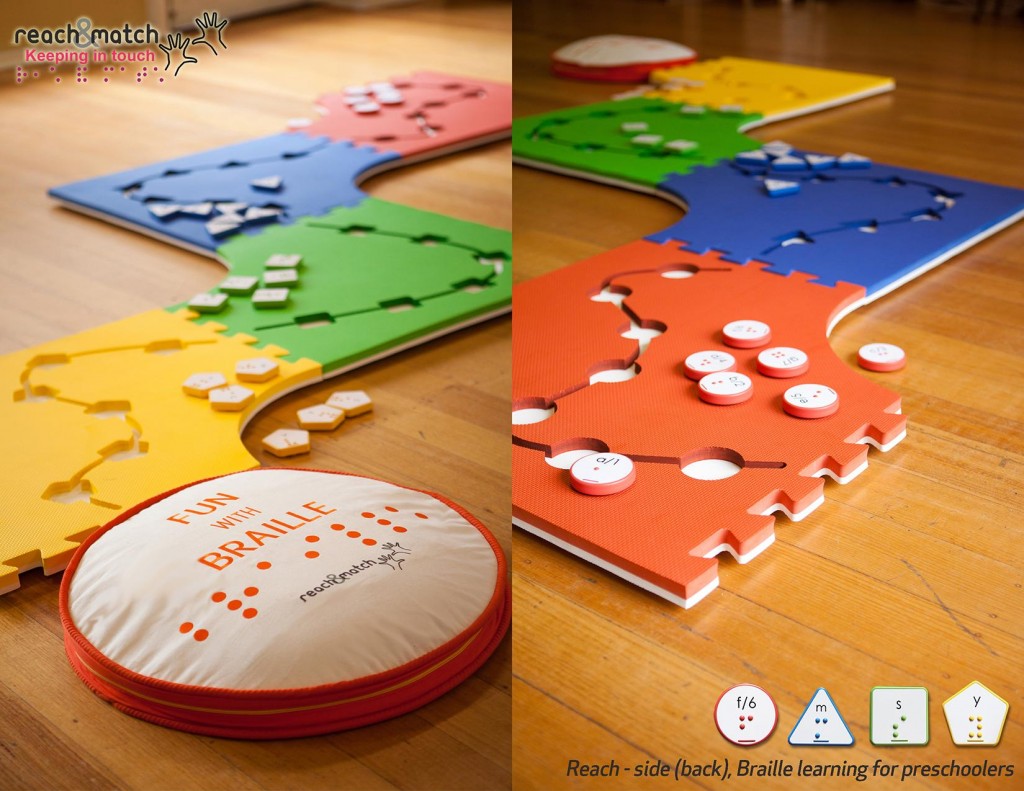
Learning Path
When the time comes to learn Braille, the mats are flipped over and put together to form a path. This side of the mat has holes where the blocks fit into. The blocks have large Braille on one side along with a tactile line to determine orientation. The child’s goal is to then put the blocks into alphabetical or numerical order along the path. Different shapes are used for each mat to help break down the numbers and alphabet into smaller groups.
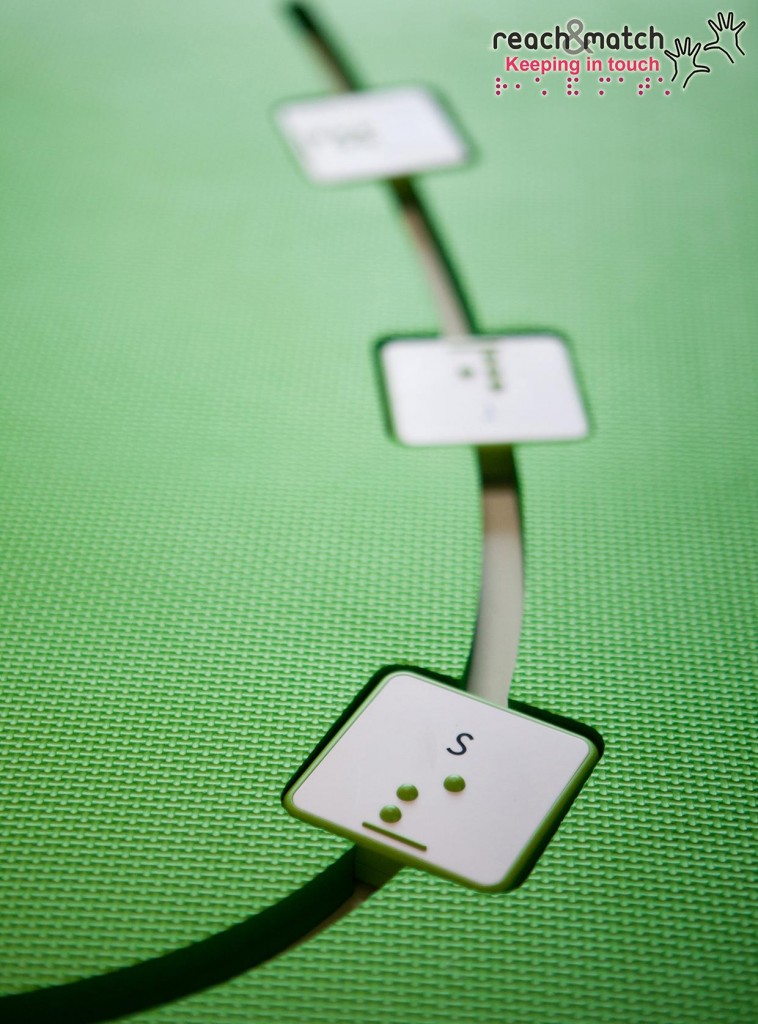
Conclusion
With Reach & Match, Mandy lists seven ways it can benefit children:
- Braille Learning
- Cognitive Skills
- Sensory Integration
- Sense of Satisfaction
- Body Movement
- Language Enrichment
- Social Interaction
All of which Reach & Match definitely has the potential of doing. Recently her design was entered into the James Dyson Award contest and was a finalist. There’s a lot of good potential here and I hope Reach & Match can go beyond prototype. Watch the video below for more on Reach & Match and visit the James Dyson Award entrant page.
